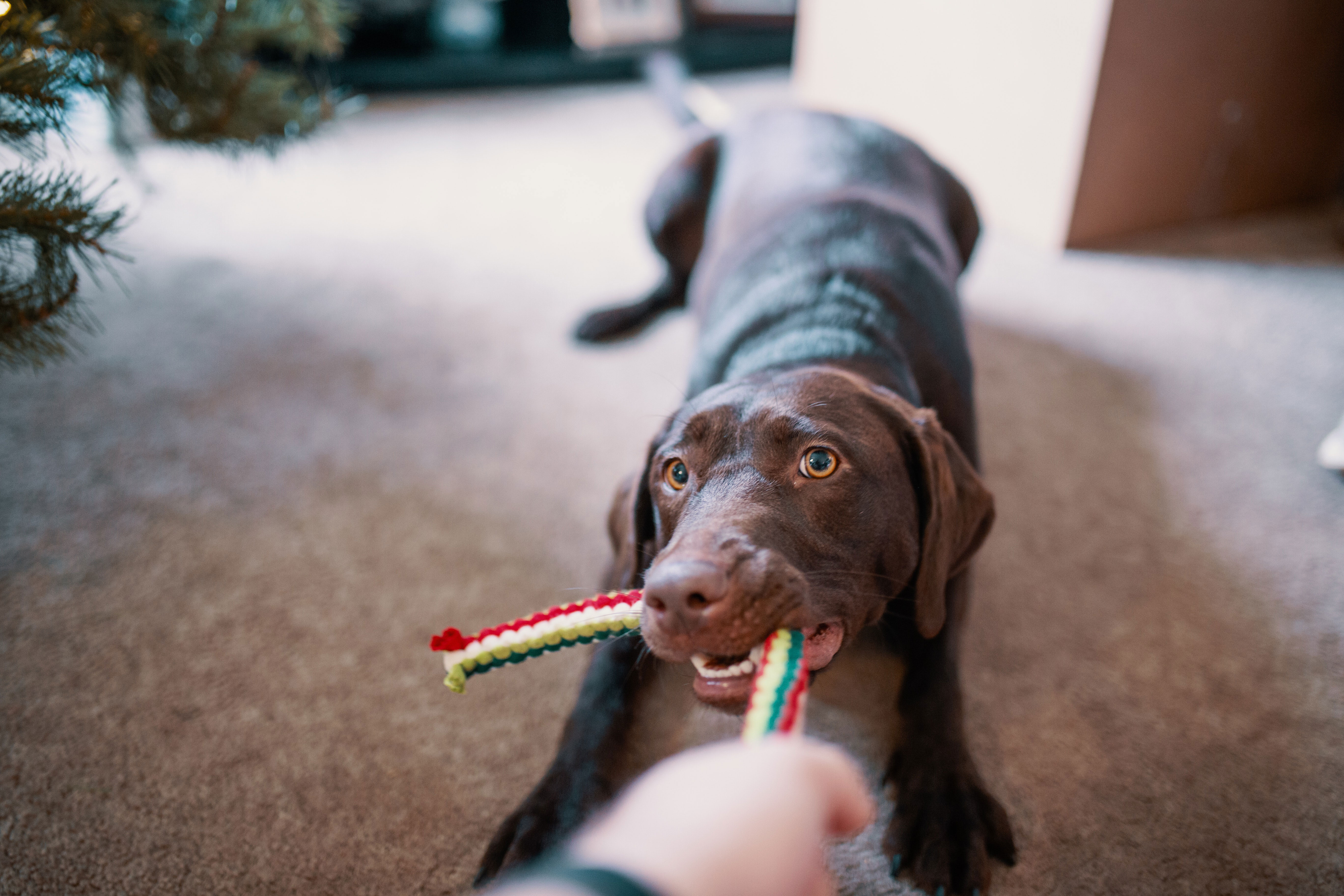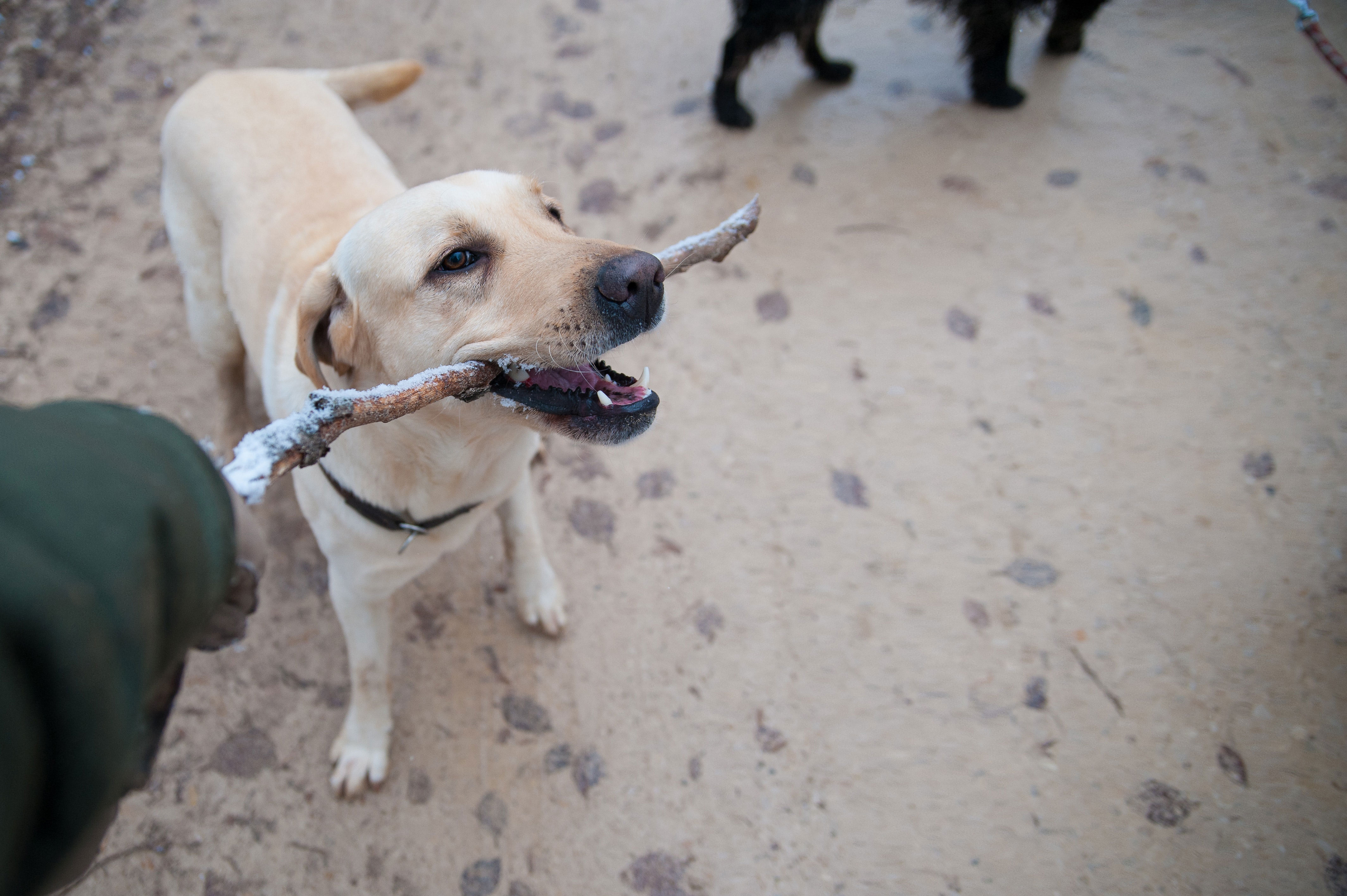
How to Train Your Dog Not to Bite Others
Dogs use their mouths to interact with the world around them. However, with a mouth full of sharp teeth, it can be tricky for dogs to use their mouths for exploring without hurting someone.
Whether the dog is a puppy who is still learning, a dog biting during play, or a dog who has problems with aggression, it’s good to nip the biting behavior in the bud. It’s important to understand why your dog is biting, the consequences of a dog bite injury, how to establish good behavior, and how to fix a behavior that is problematic.
Why Dogs Bite
In a non-aggressive sense, dogs bite to explore and play. Puppies may be teething or haven’t learned to be gentle yet. Herding breeds tend to nip at the heels of animals, children, or adults. Some dogs may be impulsive and bite on accident when playing with a toy or with others. In an aggressive sense, dogs may bite due to fear, being protective, establishing dominance, illness, possessiveness, or frustration. In 2016, a total of 6,775 postal employees were attacked by dogs. This is probably due to dogs perceiving the postal workers as threats to their property.
In order to train your dog not to bite, it’s important to determine which type of biting you’re dealing with. No matter the reason, you can still work on establishing good behavior while the dog is young and fixing the bad behavior the dog already has.
The Consequences of a Dog Bite Injury
It’s vital to stop biting behavior as soon as you can. The consequences of your dog injuring another person or animal due to a bite can lead to financial repercussions for you, or an order for your dog to be put down depending on the severity of the attack or consistency of the behavior. A dog bite can lead to physical and emotional trauma for whoever is bitten, as well as a lot of distress for you and your dog. This is why aggressive or problematic behavior needs to be remedied right away.
Establishing Good Behavior
Establishing good behavior is a lot easier than fixing the poor behavior a dog is already exhibiting. This means starting training at puppyhood, because puppies don’t fully understand how to use their mouths responsibly. While it may take longer, you can also use these training methods with older dogs who have issues with biting during play. The key to training at any age is constancy.
Socialization
Introducing puppies to other dogs, animals, people, and experiences will help them to feel comfortable in those types of environments. Learning social skills and positive correlations can help your dog later in life. Many dogs get aggressive when they haven’t been socialized because each unfamiliar experience is new and uncomfortable. Have play dates, have supervised interactions with children and other animals, take them to new places, and fill them with positive experiences as early as you can.
Don’t Engage
When you receive a bite from your puppy during play or petting, give a firm command like, “no,” and stop engaging with the young dog. This teaches puppies that biting is an unwanted behavior that won’t get them what they want. In a similar manner, puppies learn this when they bite too hard playing with their siblings or parents. When they hear a yelp, they know they’ve bitten too hard. With people, they need a similar acknowledgment. This doesn’t mean you can’t play with your puppy at all—playtime is a great way to bond. Just be sure you’re not allowing biting to happen during playtime.
Offer Chew Toys
Redirecting a bite to a chew toy is a great way to teach young dogs how to engage their need to bite and chew. If your dog bites you, redirect him to a chew toy and allow him to bite that instead. Consistency is key, and be sure to give your dog lots of love and praise when he chooses a chew toy to play with.
Responsible Play
Playing with puppies responsibly will help them learn how to play as adults. This means avoiding any and all hand play. No hitting the sides of their face with your hands to get them riled up, no allowing them to chase your hand, no poking them with your feet. Hands and feet are not toys, so don’t confuse them by allowing them to bite you during play.
Fixing Bad Behavior
Dogs who are already aggressive will be harder to train because they’ve already established some poor behavior or negative correlations with their triggers. However, that doesn’t mean you can’t continue to help them out of that behavior with training.
Visit the Vet
Another reason why dogs bite is due to pain or medical problems. Visit the vet and discuss the behavior to rule out any ailments. Your dog might be arthritic, have problems seeing or hearing, or have an injury causing them to react aggressively. He may also have issues with anxiety that can be treated to help avoid aggressive behavior.
Talk to a Trainer
Sometimes talking to a trainer is the best course of action for your aggressive dog. Trainers will have the know-how and expertise to handle dangerous behaviors. Not only will they work with your dog, they will also tell you what to do to help their behavior. Talk to your vet and ask about any dog trainers they can recommend. They can help you with specific questions, like how to travel with a dog who is aggressive, or how to train a dog out of ankle nipping.
Work with Your Dog’s Triggers
It’s hard to train a dog out of his aggression or biting if you’re not aware of why it happens. Pay attention to your dog’s triggers and work to help your dog through them. Maybe it’s strangers, children, small animals, other dogs, or men. Maybe it’s only when they are eating, when a toy is involved, or when an animal gives chase. Work to make the trigger a positive experience, or eliminate the trigger if you can. However, if you’re worried about safety, consult a trainer to help turn your dog’s triggers into positive experiences.
Practice Avoidance
Sometimes the best way to handle a dog who bites is to practice as much avoidance as you can. Utilize a muzzle in public areas, but keep the dog at home as much as possible if outside stimuli like people or other dogs are triggering. Leave the dog alone during meals if food aggressiveness is an issue. Don’t allow your dog around small animals if he has a strong prey drive. Let guests know about boundaries concerning your dog, and keep your dog fenced in. You can still work on your training in addition to practicing avoidance. Your dog can have a fulfilling and happy life without being exposed to those triggers.
It’s important to remember that dogs who bite are largely a product of their situation. For instance, dogs bred to herd don’t know that nipping your heels is bad. Puppies are still learning what is acceptable in terms of mouthing. Dogs who are fearful only know how to protect themselves. They can’t exhibit malice. Patience and understanding is important, and so is the dedication to help your dog learn not to bite in order to keep everyone safe.










